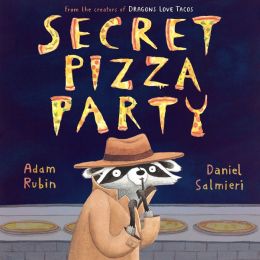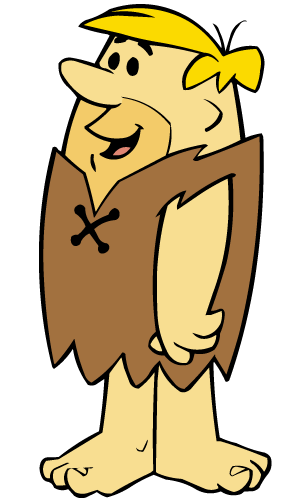I have now posted my thoughts on 100 books I think are worth
reading. More posts are on the way. However, I am pausing to look back on my
recommendations and to follow a pervasive trend that exists in society: encapsulating ideas in a numbered list (e.g.,
Letterman’s Top 10, The 7 Habits of Highly Effective People, my neighbor’s Top
3 reasons for cranking up the pressure washer the moment I choose to have a
Saturday afternoon nap).
Herein, is my Top 10 list, an encore trumpeting of some
outstanding books I have previously reviewed.
Initially, I felt a Top 3 would suffice, but that left out too
much. A list of ten proved difficult as
well. My draft list included nineteen
titles and I felt guilty about the runners up that would have proudly appeared
in a Top 30 or Top 70. I am, after all,
the type of person whose favorite book may vary depending on my mood, the
amount of Vancouver rain during the week or what I’ve read most recently to an
engaged audience.
Perhaps because the process proved so challenging, I have
included links to other books I have recommended that I connect for one reason
or another to The Chosen Ones. I can’t
imagine anyone having read all my posts, so this provides another opportunity
to read my thoughts about books I strongly believe are worth sharing with
boys...and girls. I encourage you to go
back and peruse the original posts. Just
click on the title to read my initial thoughts.
The blurbs below are written based on my lingering impressions of each
book.
Trumpets ready?
French horns? Oh, let’s shake
things up and throw in a ukulele and a couple of kitchen pots and ladles. Drum roll, please...
 By
Jean-Luc Fromental and Joëlle Jolivet
(Abrams Books for
Young Readers, 2006)
By
Jean-Luc Fromental and Joëlle Jolivet
(Abrams Books for
Young Readers, 2006)
Love the fact the book is oversized. Love the odd color palette. The book has an environmental message and
contains all sorts of math that kids will enjoy spotting. Forget the counting from 1 to 10 books. Fromental and Jolivet go much bigger! More than anything though, this is a silly
story about always lovable penguins (at least, when they come in manageable
groupings).
Written
by Nicola Davies
Illustrated by
James Croft
(Candlewick Press,
2003)
Here’s a book that
presents nonfiction in a fun way. Sure,
the topic is a perennial favorite, but Davies helps debunk the popular misrepresentation that all sharks are enormous beasts intent on terrorizing
humans while an ominous score plays in the
background. It’s been a hit every time I’ve read it to
groups of kids. Give them the facts and
make it fun. Davies has done just that.
By
Mélanie
Watt
(Kids Can Press,
2006)
For some, safety trumps
adventure. Scaredy Squirrel loves his
routines, set in his familiar tree.
Danger lurks in the great beyond:
poison ivy, killer bees, green Martians and savage sharks (Note to
Scaredy: read book pick #7.). Elaborate emergency plans must be made in
case the dangers ever become a reality.
Poor Scaredy soon discovers, however, that sometimes you just can’t plan
for the unexpected. This book is
guaranteed to amuse!
Other
quirky, amusing book picks: Yuck, A LoveStory, Let’s Do Nothing, Pssst!, Chester, Chicken Big, Straight to the Pole,
The Stupids Die, The Three Little Wolves and the Big Bad Pig, I’d Really Liketo Eat a Child.
 By
Peter H. Reynolds
(Candlewick Press,
2003)
By
Peter H. Reynolds
(Candlewick Press,
2003)
I can view the book literally as
encouragement toward my woeful abilities as a visual artist, but this book has
a broader application. It prods all of
us to go ahead and try things, to be acknowledged and to set our own standards
instead of comparing ourselves to others.
This book is truly inspirational.
Every time I have read it, the audience spontaneously applauds the
message.

Written by Cary
Fagan
Illustrations by
Nicolas Debon
(Tundra Books,
2008)
This book is great fun to read aloud. Fagan packs the picture book with a broad
range of characters, allowing readers to create so many different voices to
represent the crazed salesman, the nostalgic old lady and the nervous suitor
who tries to garner the courage to blurt a marriage proposal. More than anything, however, this is the
story of an odd looking toy, unceremoniously rejected by a spoiled boy named
Archibald Crimp, and Thing-Thing’s hopes that someone will accept and love him. The illustrations and the toy’s floor-by-floor
observations at the Excelsior Hotel make this story completely fresh and wholly
memorable.
By Oliver Jeffers
(Harper Collins, 2006)
If only it could work. Get smart
by eating books! Feast on stacks of
books—Mmm! Found a red one!—and obliterate the
competition on lucrative quiz shows!
Become brainier than your teacher!
(Kids typically gasp and say, “That’s impossible!”) Of course, Henry’s book-eating ways go
terribly wrong. The tale captivates
young readers and underscores the value of books. Digesting facts just might not be such a
literal endeavor. The title lets us know
this will be a goofy read. Indeed, it
is. I am so thankful that we can be
entertained by the zany mind of Oliver Jeffers!
By
David Wiesner
(Clarion Books,
2006)
An old camera washes up on the
shore. Whose is it? This is an opportunity to discover so much
more than a mere message in a bottle.
Here is a wordless picture book that can take an hour or more to
“read”. It reminds children of the
importance of attending to pictures.
Wiesner is another creator with a truly unique mind. I am in absolute awe of this masterpiece
collection. It is candy for the eyes.
Other wordless books I’ve recommended:
Why, Ship Ahoy!, Imagine a Place
(okay, it has words, but I prefer to pass my time gazing at the pictures).
 By
Elisha Cooper
(Greenwillow
Books, 1999)
By
Elisha Cooper
(Greenwillow
Books, 1999)
I would never have thought that such
a plainly named book about erecting a building would be so brilliant in terms of text,
illustrations and layout. With each
reading, something different stands out in Cooper’s portrayal of the people and
the process of building a structure on a vacant lot.
 By
Peter Holwitz
(Philomel Books,
2005)
By
Peter Holwitz
(Philomel Books,
2005)
I see so many ways to use this book
in working with students, but more than anything, this book is pure entertainment. For me, it is a treasure that I only
discovered by browsing the bookshelves in a library. As transformed in the story, Scribbleville is
the kind of enlightened place where I’d love to live. And how true that the first people to show
acceptance are the children...and a teacher.
You must track down this title!
Written by Zetta
Elliott
Illustrated by
Shadra Strickland
(Lee and Low
Books, 2008)
I love dining on green eggs and
(veggie) ham, imagining where the wild things are and fretting over a bus-driving
pigeon, but Bird is a picture book that
shows us how deep picture books can go, addressing complex subject matter like
drug addiction, death and dreams. The
book shatters stereotypes and assumptions we make about drug users and reminds
us that some who possess a core of goodness may still go astray. Strickland’s illustrations are exquisite and
Elliott’s story will linger with you. If
I could only keep one book (and thank goodness I am not faced with such a
ludicrous predicament), this would be it.
Thank you, Shadra. Thank you,
Zetta.
































